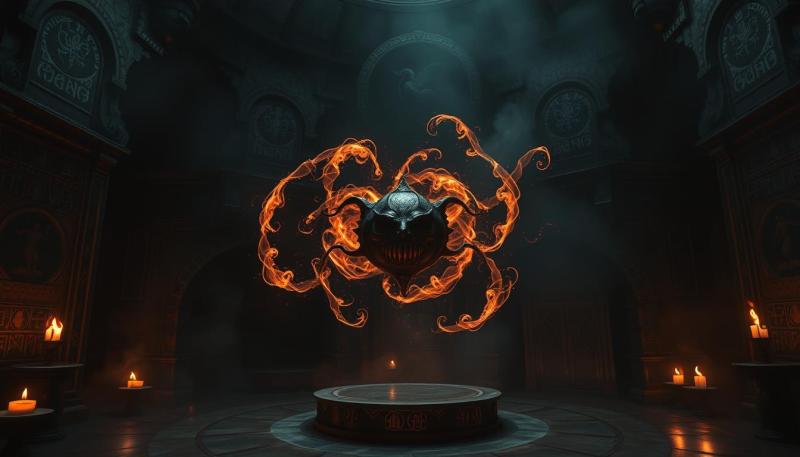There’s something magical about diving into the endless possibilities hidden within the wizarding world. For years, readers and viewers have passionately dissected every spell, character choice, and mysterious subplot. Today, we’re exploring how these creative speculations stack up against canon evidence.
J.K. Rowling’s layered storytelling invites us to look closer. From Aberforth’s cryptic behavior to Fenrir Greyback’s chilling influence, subtle details spark big questions. But how much of what we debate is supported by the text? Let’s find out together.
This isn’t just about proving theories right or wrong. It’s about celebrating how a beloved series continues to inspire curiosity. Whether you’ve debated Draco’s true loyalties or wondered about Dumbledore’s past, you’re part of a vibrant community that keeps the magic alive.
Key Takeaways
- The fandom’s creativity turns small details into compelling narratives
- Book quotes, movie scenes, and author insights help validate claims
- World-building choices intentionally leave room for interpretation
- Healthy debates deepen our connection to the story
- Newcomers and longtime fans can enjoy these discussions equally
Setting the Stage: The Magic Behind Fan Theories
J.K. Rowling’s crafted universe is a treasure trove for theorists. Her seven-book saga brims with intentional clues, from symbolic names to hidden connections. This meticulous design turns casual readers into detectives, scanning every chapter for answers.
Think about Tom Riddle’s diary – a simple object that later reshaped the entire series. Small details like these act as kindling for fiery debates. The Deathly Hallows’ ambiguous origins? Perfect fuel for discussions about power and mortality in the wizard community.
Rowling’s interviews add another layer. When she revealed Dumbledore’s sexuality post-publication, it reshaped how fans viewed his relationships. These creator insights blur the line between text and subtext, letting theories bloom.
| Story Element | Canon Clues | Popular Fan Take |
|---|---|---|
| Deathly Hallows Symbolism | Elder Wand’s bloody history | Represents WWII political allegory |
| Tom Riddle’s Motives | Orphanage flashbacks | Fear of death driving immortality quest |
| Hogwarts’ Secret Rooms | Chamber of Secrets discovery | Network of founder-era passages |
Why does this matter? Because Rowling built her world with layers. The series’ dark undertones and complex characters invite us to look deeper. Next, we’ll examine which theories hold up – and which ones crumble under scrutiny.
Exploring Intriguing harry potter fan theories
What if every spell cast in the wizarding realm held a secret message? This bold idea from popular platforms shows how creative minds transform minor details into grand narratives. From the Marauder's Map origins to the true purpose of Time-Turners, these interpretations reveal new layers in familiar stories.
Some theories challenge established rules. Could Dementors represent depression metaphors rather than literal guards? Others expand possibilities – maybe house-elf magic operates on entirely different principles than wizard spells. The beauty lies in how these ideas interact with canon, either creating tension or deepening existing themes.
Consider the debate around Snape’s patronus matching Lily’s. While the books confirm his enduring love, fans argue whether this symbolizes redemption or obsession. These discussions show how character motivations become richer through community analysis.
“Every flick of a wand tells two stories – the written tale and the reader’s imagination,” one enthusiast noted. This interplay keeps the magic alive years after the final page turns. What hidden connections might you discover on your next journey through the enchanted halls?
Canon vs. Fan Speculation: Understanding the Divide
Walking the tightrope between official lore and imaginative theories feels like navigating the Room of Requirement – possibilities seem endless, but not everything fits. Let’s unpack how book details and movie adaptations fuel debates while maintaining narrative boundaries.
When Pages Meet Projectors
Take Aberforth Dumbledore’s actions during the Battle of Hogwarts. The books describe his patronus guiding Harry, while the movies show him physically fighting. This visual choice sparked theories about secret alliances – though no text confirms strategic maneuvers beyond his barroom resistance.
| Canon Source | Fan Interpretation | Evidence Gap |
|---|---|---|
| 1994 Triwizard rules | Time-turner loophole theories | No explicit age limit in text |
| Prisoner of Azkaban timeline | Multiple Buckbeak saves | Single sunset reference |
| Deathly Hallows symbol origins | Founder-era creation | No pre-Peverell mentions |
The Year That Changed Everything
Why do timeline details matter? The 1978 Hogwarts graduation year for certain characters becomes crucial when analyzing relationship dynamics. Yet fans often stretch these events to fit alternate arcs – like suggesting Snape delayed his Death Eater initiation.
“Canon gives us bones; fandom grows flesh.”
While some theories bend established rules, they showcase our desire to solve Rowling’s intentional puzzles. The key? Enjoy the speculation symphony – just know when the orchestra’s playing from the original score.
Fan Theory Highlights: From Draco to Ginny
Some character arcs leave us with more questions than answers. Two figures spark endless debates: Draco Malfoy’s chilling evolution and Ginny Weasley’s controversial Chamber ties. Let’s unpack how these theories reshape our understanding of key story moments.

Fenrir Greyback’s Bite and Draco’s Pale Shift
Draco’s physical decline in later books fuels speculation. Could Fenrir Greyback have bitten him off-page? Fans note his pale complexion and withdrawn behavior as potential lycanthropy clues. While no text confirms this, the theory adds layers to Draco’s fear during the Astronomy Tower battle.
Ginny’s Chamber Secrets: Victim or Catalyst?
Ginny’s connection to the Chamber remains ripe for analysis. Some argue Tom Riddle’s diary left lasting control, explaining her combat skills in later battles. This interpretation suggests she wasn’t just a pawn – she absorbed dark magic in a dangerous way.
| Theory | Supporting Clues | Canon Counterpoints |
|---|---|---|
| Draco’s werewolf link | Frequent illness, Greyback’s interest | No full-moon references |
| Ginny’s residual control | Improved dueling post-Chamber | No explicit mind-control mentions |
These ideas change how we view relationships. If Draco feared becoming a monster, his bullying takes on new context. Ginny’s resilience might stem from overcoming manipulation – a lot more complex than surface-level heroism. Both theories showcase how minor details can redefine a person’s journey.
Whether you find these takes convincing, they demonstrate the power of perspective. Every reader brings their own lens to the story, uncovering hidden paths through familiar battles.
Muggle Technology and Magical Anomalies
Ever notice how some everyday items act strangely around magic? The books tell us electronics go haywire at Hogwarts. But certain Muggle devices buck this rule, creating puzzling exceptions that spark wild fan theories.
Take the Weasleys’ flying Ford Anglia. It survived the enchanted place for months. Colin Creevey’s camera worked perfectly, too. These anomalies clash with the usual lore about magical interference. So what gives?
- Magical "dead zones" in the castle?
- Modified tech from Arthur Weasley?
- Ancient wards weakening over time?
Some suggest the Chamber of Secrets holds answers. If Salazar Slytherin built hidden tunnels, maybe he also left areas where Muggle inventions function. This theory ties tech quirks to Hogwarts’ mysterious lifeblood.
| Muggle Item | Magical Behavior | Popular Explanation |
|---|---|---|
| Ford Anglia | Gained sentience | Absorbed castle magic |
| Camera | Captured ghosts | Enchanted film |
These debates do more than add laughs. They challenge how we see the wizarding world’s rules. Next time you reread the book, watch for tech oddities – you might spot new chamber secrets hiding in plain sight.
Unraveling Founder Mysteries and Hidden Pets
Behind Hogwarts' ancient stones lie whispers older than the Sorting Hat itself. While we know the chosen one prophecy shaped modern events, some believe the school's founders left their own cryptic legacies – including unusual animal companions.

Helga Hufflepuff’s Aquatic Secret
The giant squid in the Black Lake sparks wild speculation. Could this creature be Hufflepuff’s original pet? Fans note its gentle nature mirrors her values, while Ravenclaw’s diadem raven and Gryffindor’s lion tapestry suggest a pattern. This theory gains traction when comparing founder artifacts:
| Founder | Known Symbol | Secret Pet Theory |
|---|---|---|
| Helga Hufflepuff | Cup | Giant squid as lake guardian |
| Rowena Ravenclaw | Diadem | Talking raven advisor |
| Salazar Slytherin | Locket | Basilisk as "heir detector" |
These ideas intersect with broader wizarding world mysteries. Neville Longbottom’s herbology skills, for instance, make some wonder if he inherited plant magic from a founder’s lineage. His parents tortured by Death Eaters adds emotional weight to theories about hidden bloodlines.
"Founders’ pets weren’t just companions – they were magical anchors for their values."
Could these secrets explain why Neville Longbottom nearly became the chosen one? Some argue the founders’ magic responds to underdogs, much like the Sword of Gryffindor. While no text confirms this, it reshapes how we view Neville’s growth from clumsy student to decisive leader.
The parents tortured connection deepens when considering how founder legacies influence present-day heroes. Whether these theories hold water matters less than their power to make us re-examine every page – and maybe spot squid tentacles in Hufflepuff’s vintage tapestries.
Impact on the Wizarding World and Fandom Culture
Imagine a spell so powerful it reshapes how millions view their favorite story. That’s the ripple effect of passionate debates within magical fandoms. Even though the books ended years ago, fresh perspectives keep the wizarding world alive in unexpected ways.
Reddit threads explode with takes on Dumbledore’s true intentions. Was he a chessmaster protecting the greater good, or a flawed leader using students as pawns? These discussions change how people around the globe interpret his choices – especially after CBR’s analysis highlighted his moral complexity.
| Character | Canon Portrayal | Fan-Driven Legacy |
|---|---|---|
| Albus Dumbledore | Wise mentor | Machiavellian strategist |
| Death Eaters | Pure-blood supremacists | Systemic oppression allegory |
The Death Eaters’ symbolism evolved too. Once seen as simple villains, many now view them through real-world lenses – mirrors for extremist groups or toxic systems. This shift shows how people around fictional worlds apply modern social frameworks.
Media coverage amplifies these ideas. When major outlets debate whether Snape deserved redemption, it sparks campus discussions and TikTok deep dives. Even though J.K. Rowling’s text remains unchanged, our collective imagination keeps expanding her universe.
What’s the secret sauce? It’s how fans connect dots authors never intended. Those midnight forum posts and convention panels don’t just entertain – they prove stories grow richer when shared.
Analyzing Evidence: Debunking and Validating Theories
Separating wizarding fact from fiction requires more than a simple "Lumos"—it demands a critical eye. Let’s examine how key moments like the battle Hogwarts reveal which theories withstand scrutiny. Take Severus Snape’s final act: his memories confirmed Dumbledore’s trust, but fans still debate whether he could easily have survived.
Many theories hinge on reinterpreted details. During the battle Hogwarts, some claim Neville’s sword strike proves Gryffindor’s ghostly influence. Yet the text only states he acted bravely—no supernatural help mentioned. This shows how could easily become speculation without direct evidence.
Severus Snape’s complex motives get similar treatment. While his Patronus mirrors Lily’s—a canon-confirmed connection—some stretch this to suggest secret parentage. The magical world thrives on mystery, but we must distinguish poetic parallels from factual links.
| Theory | Canon Support | Evidence Gap |
|---|---|---|
| Snape faked death | Phoenix tears nearby | No resurrection proof |
| Founders guided Neville | Sword responds to bravery | No founder ghosts appear |
Why do misinterpretations flourish? The magical world invites us to read between lines. When analyzing Severus Snape or battle strategies, ask: Does this align with established rules? Could characters’ choices explain it? Magic thrives on wonder—but lasting theories root themselves in parchment and screen.
Gryffindor Quidditch Seeker Soft Tee - Cardinal
Show off your house pride and love for Quidditch in this comfy tee perfect for any Gryffindor fan
Product information
$18.99
Product Review Score
4.51 out of 5 stars
70 reviewsProduct links
The Role of Creator Insights and Controversial Statements
When creators speak, fans listen—but not every insight becomes canon. J.K. Rowling’s interviews and tweets often reshape how we view the wizarding world. Her 2007 reveal about Dumbledore’s sexuality, for instance, validated theories about his character depth while sparking debates about representation.
Sometimes, a single comment creates ripples. Take Nagini’s backstory: Rowling mentioned she was once a human without even addressing it in the books. This led to fresh theories about other characters’ hidden origins—like whether Harry’s parents knew about Horcruxes before their deaths.
| Creator Insight | Fan Theory | Outcome |
|---|---|---|
| Dumbledore’s youth romance | Grindelwald manipulation theories | Added emotional context |
| McGonagall’s early career | Secret mentorship of Lily Potter | Unconfirmed but popular |
| Nagini’s human past | Connection to Parseltongue lore | Mixed reception |
Controversial statements carry weight too. When Rowling suggested Hermione might not have ended up with Ron, fans dissected every character interaction. Some argued this validated Ron’s immaturity; others saw it as undermining their growth. These debates show how one offhand remark can rewrite years of analysis.
Parental influences often drive speculation. Did Snape’s childhood shape his loyalty? Could Neville’s parents’ fate explain his resilience? Rowling’s clues about family legacies let fans connect dots without even explicit text—proving her words linger like spells, altering how we see every page.
Conclusion
Exploring these narratives reminds us why stories stick with us long after the final page. We’ve journeyed through canon clues and creative leaps, seeing how love for the story fuels endless debates. Whether dissecting death symbolism or decoding hidden bonds, every theory reflects our shared sense of wonder.
What makes these discussions thrive? It’s the blend of careful analysis and playful imagination. While some ideas fit neatly into J.K. Rowling’s framework, others stretch boundaries—and that’s okay. Healthy skepticism keeps us grounded, but passion keeps the magic alive.
Here’s the beautiful truth: your perspective matters. Maybe you see Dumbledore’s choices through fresh eyes or spot new layers in familiar spells. Approach theories with a balanced sense of curiosity—celebrate what’s confirmed while dreaming up possibilities.
Ready to join the conversation? Share your favorite interpretations below. After all, the wizarding world grows richer when we explore it together, one fan-driven idea at a time.






